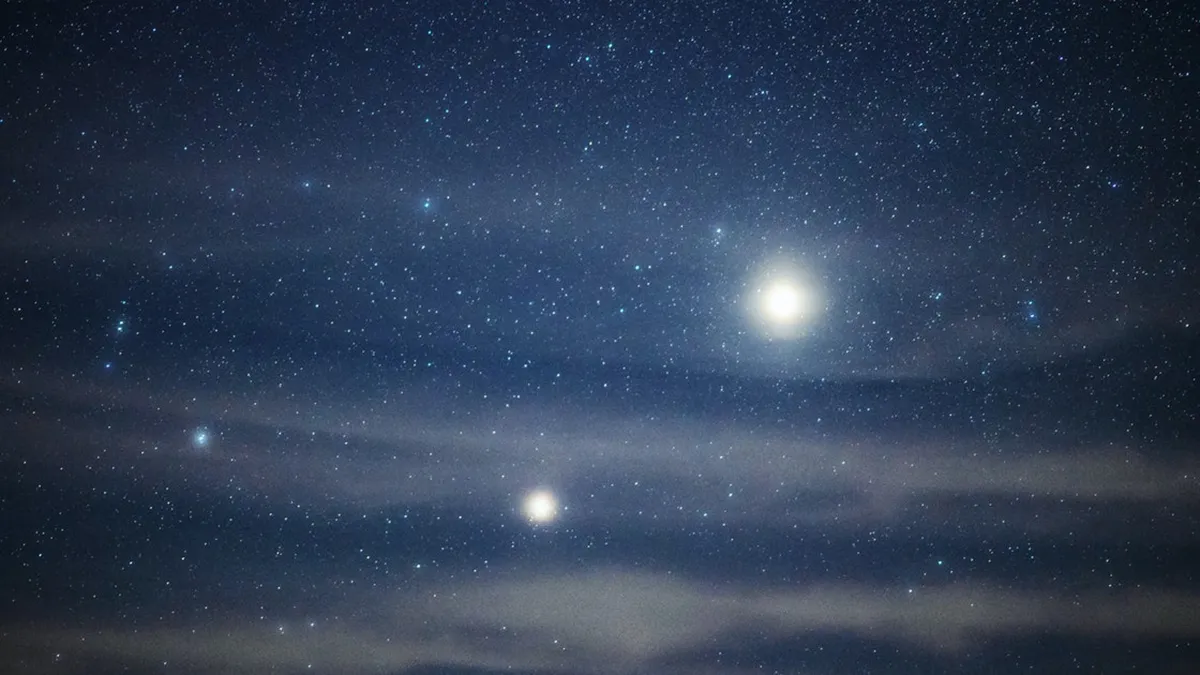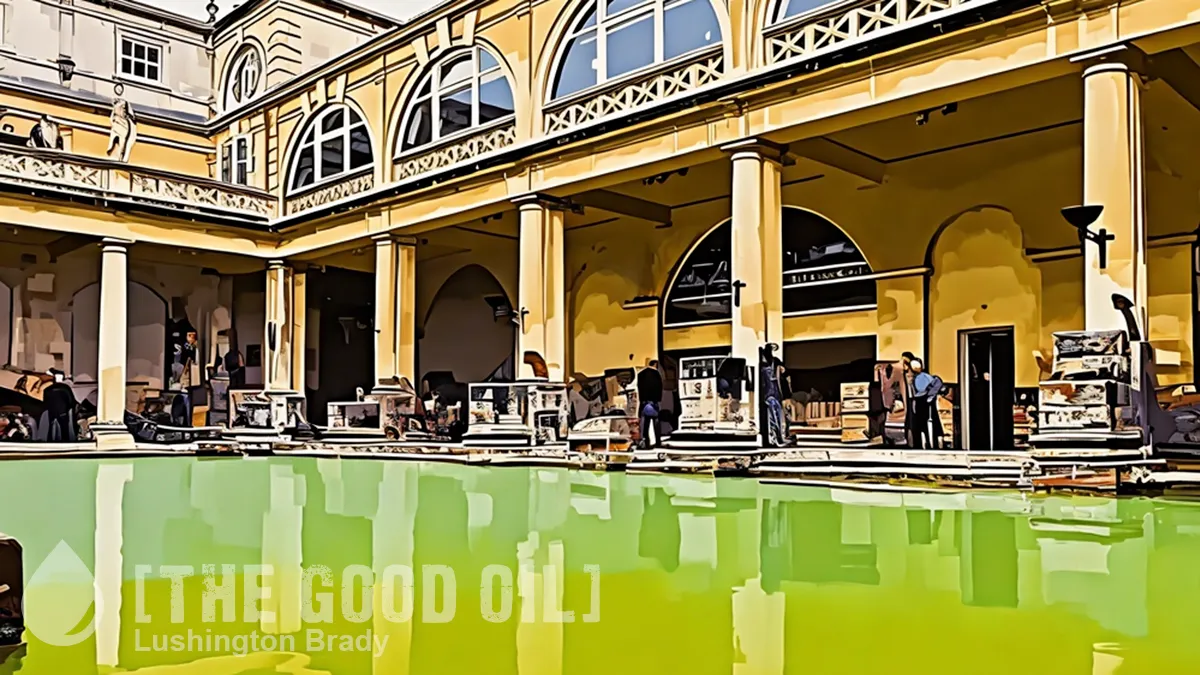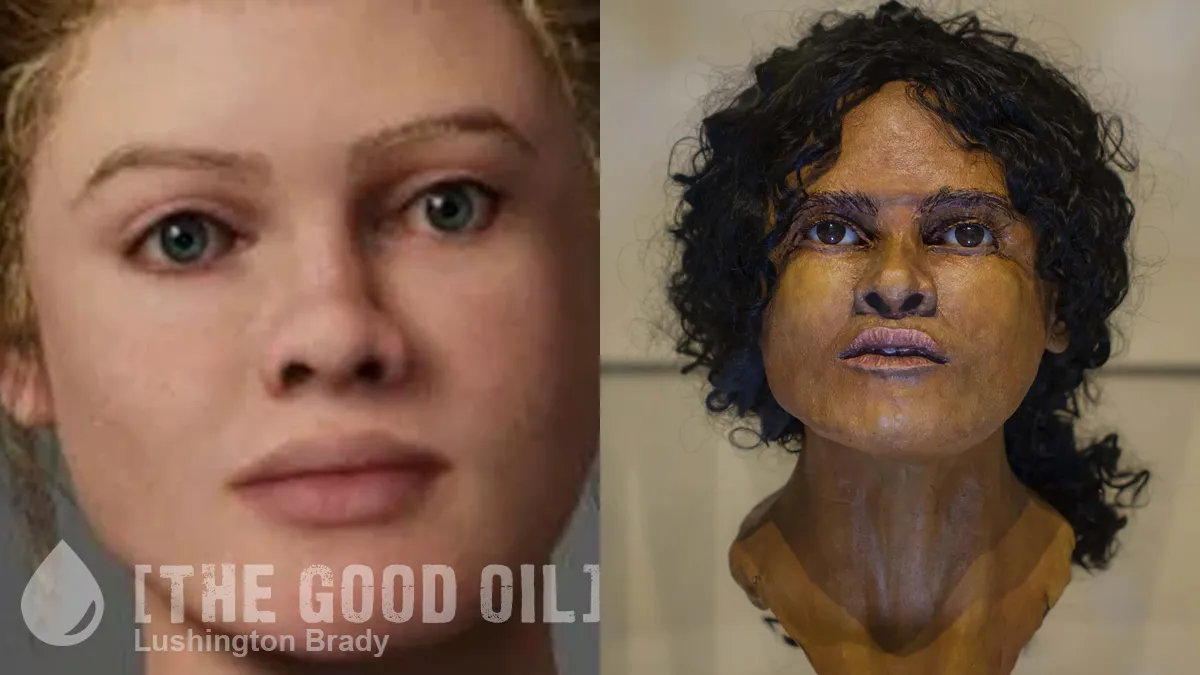Table of Contents
I’ve been a fairly keen amateur astronomer for much of my life, certainly since my parents gave me my first telescope (a 3” Newtonian reflector) in my pre-teens. So it’s almost a reflex for me to at least glance up at the sky nearly every night (I’m also fortunate enough to live in the country, where I can actually see the night sky). You should do it; you’ll almost always see something interesting.
I’ve been noticing something very interesting, the last few nights: Jupiter and Saturn are getting very close to each other.
They’re about to get even closer.
Jupiter and Saturn are set to create a “Christmas star” with a dramatic close encounter that has not been seen from Earth in nearly 800 years.
The solar system’s two largest planets will appear to merge, creating a bright point in the sky on 21 December.
A few nights ago, the two planets were barely a finger-width apart. That in itself was impressive enough: a “Grand Conjunction”, when Jupiter and Saturn are a degree or so apart, occurs about once every 20 years. But this is a “Great Conjunction”: the two planets will be just 0.1 degrees apart. That means they’ll be practically indistinguishable to the naked eye. Telescopes will be able to view both planets in their field of view at the same time. Even a moderately powerful pair of binoculars will make rewarding viewing.
The last time the two gas giants appeared so close was in 1623 – but astronomers say the stargazing conditions at the time and position of the sun meant it was most likely not seen.
You have to go back to 1226 for the previous time such a “Great Conjunction” was observable with the naked eye, according to EarthSky.
The next chance for people to enjoy the “Christmas star” will be in 2080.
Astronomers are calling the event the “Great Conjunction of 2020”, which will coincidentally happen on the winter solstice – the longest night of the year in the northern hemisphere.
It’s going to be a near-run thing for those of us in the Southern Hemisphere: Jupiter and Saturn are currently setting not long after sunset.
To see the “Christmas Star” from New Zealand, look to the west-south-west horizon at or after sunset. Depending on your elevation and whether or not you’re surrounded by tall buildings, you should be able to see the conjunction until about 10pm. Luckily, the “star” will be so bright that you should be able to see it from about 9pm, even if the sky is still relatively light.
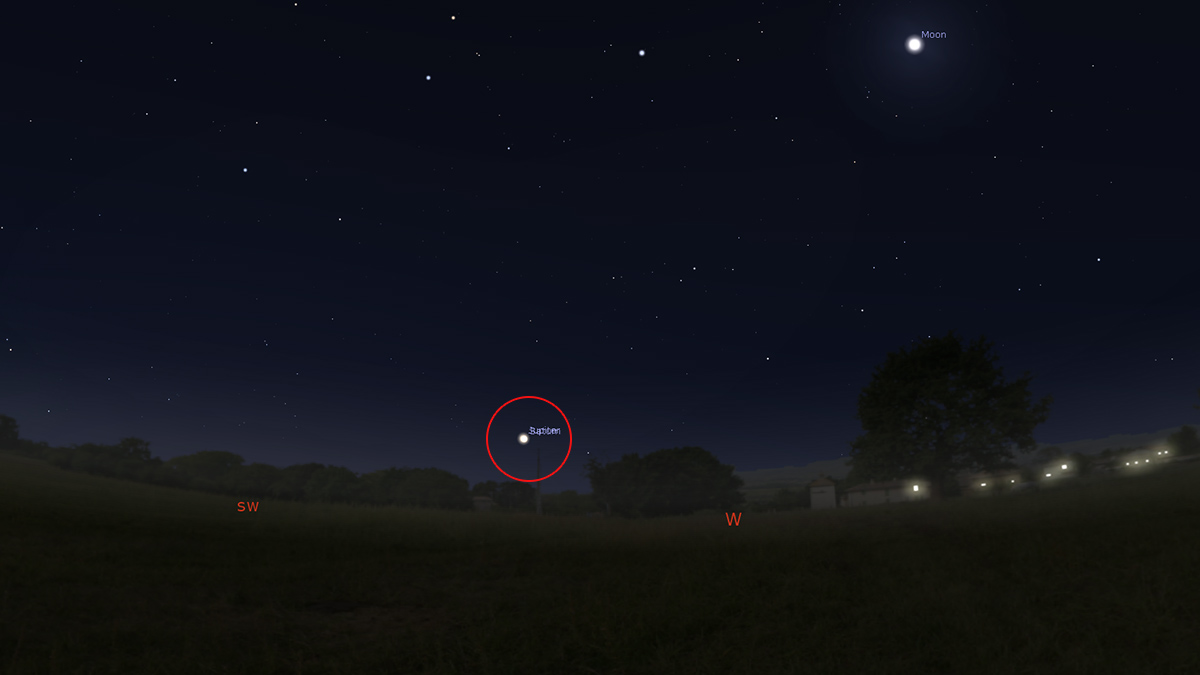
Don’t worry about trying to figure out which star it is: it will be unmistakable. Even in normal conditions, Jupiter is easily distinguishable as a bright, steady, off-white star; Saturn is only slightly less bright and noticeably yellow.
Who knows? Maybe this “Christmas Star” will be a harbinger of good tidings for 2021.
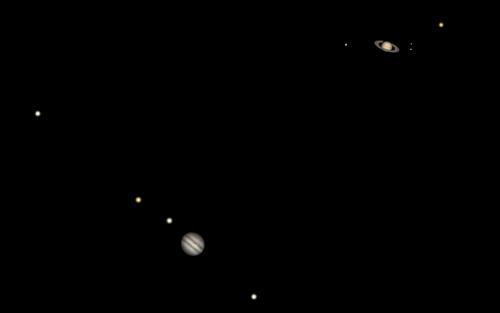
Please share this article so that others can discover The BFD

